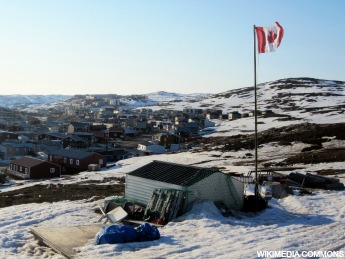Even when there's snow on the ground, the kids play soccer. If you lived in arctic Canada, you'd know better than to wait for the landscape to thaw.
Soccer may seem a bit out of place in the distant, cold province of Nunavut, and in many ways, it is. But soccer has gained traction because of its accessibility: It's a relatively cheap sport to play, much cheaper than hockey, and cheaper even than hunting, which is the preferred form of recreation among the Inuit peoples.
And, as featured in a New York Times story by Jere Longman, soccer has proven to be an important outlet for the youth in Iqaluit, where the suicide rate is 10 times the Canadian national average. The harsh landscape, combined with long, dark winters and a high cost of living, create a tough situation for many Inuit.
Another complication: The people living in Iqaluit are traditionally nomadic peoples that have been trying for decades to figure out community living. The social and environmental strains place a hard burden on the youth.
But soccer has been a lifesaver -- literally. It provides a way for the community to connect with the rest of the world, and it provides a distraction from tough aspects of life, including violence, sexual abuse, and other suicides.
Iqaluit's people have had to adapt the game: They typically play in side on basketball courts, and they created their yellow and red referee cards from construction paper.
"Around here, you've got to be flexible with a capital 'F'," said a local tournament organizer.
For the team's coach, who used to be a drug addict before quitting his addiction and becoming a positive force, soccer is a source of joy -- and a point of pride.
"I'm trying to show the community that you can turn your life around," he tells the NYT. "I'm proud of my team. I'm proud of myself."





